How to Create Curves with Bent Lamination
Brian Boggs, a virtuoso of bending wood, explains the basics and far beyond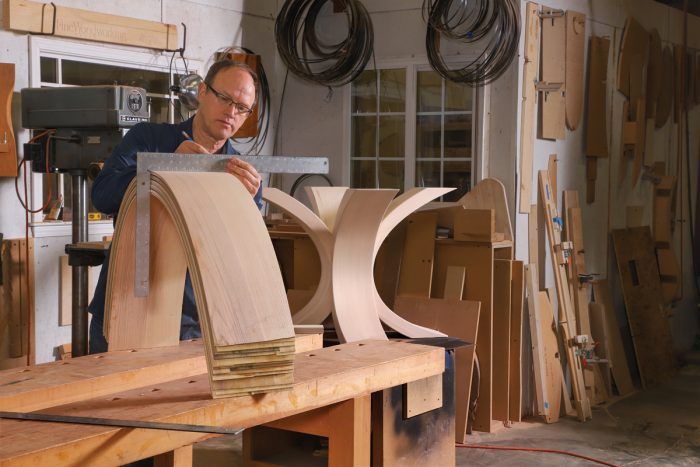
Synopsis: Bent lamination makes strong curved parts that wouldn’t be possible with steam-bending or sawing. Because it is achieved through gluing up thin laminates, it works with most wood species, and the multiple face-grain glue joints give a bent-laminated curve great strength. The keys to success are accurately machined laminates, careful attention to glue, and uniform clamping pressure throughout the bend.
Bent lamination—gluing up thin layers of wood to create a curve—allows you to generate curved parts that wouldn’t be possible by sawing or steaming. It lets you make sharp curves and reverse curves, enables you to make wide parts, and delivers uniform results for multiple parts. Lamination produces a workpiece whose grain follows the curve completely, which, combined with all the face-grain glue joints, gives a bent-laminated part great strength. Achieving a successful bend requires accurately machined laminates, careful attention to glue, and uniform clamping pressure throughout the bend. I’ll discuss all of these in detail.
Make solid stock into laminates
Let’s start with sawing. Slicing laminates is the work of a well-tuned bandsaw. Tablesaws can be used, but you lose lots of material in the kerf. This is expensive, and it reduces grain continuity on the edge of the glued-up part.
Bent lamination works with virtually any species of wood, even tropical ones that typically don’t respond well to steam-bending. Air-dried stock is best, if you can get it. Kiln-dried wood can contain a significant amount of stress, and if it does it won’t resaw well. If the stock is bowing and twisting as you saw it, use a different board.
How thin the laminates need to be depends on the wood choice and the degree of the curve. The brittler the wood and the tighter the curve, the thinner you’ll need to make the laminates. For each new curve, cut a test laminate, guessing how thick it might need to be (1⁄8 in. to 3⁄16 in. is a good place to start). Bend it over the form. If it’s too stiff to make the curve, make thinner ones until you have a laminate that bends to shape easily. Keep in mind that you’ll be bending a stack of laminates, so any resistance to taking the bend will be multiplied.
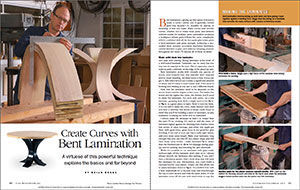
From Fine Woodworking #278
To view the entire article, please click the View PDF button below.
 |
|
 |
|
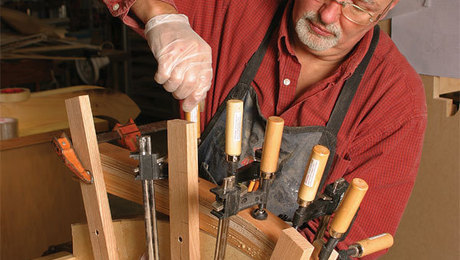 |




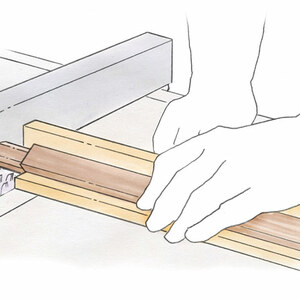
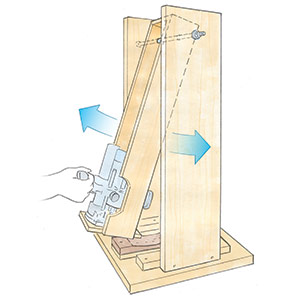
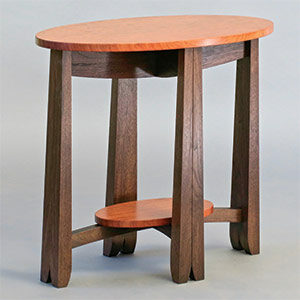












Comments
Hi Brian! Thank you for writing this article. I’ve been an avid woodworker for years and I’ve never had the knowledge to try something like these table legs but they look beautiful and I want to try. I was curious how important having the same wood throughout the lamination was or could I substitute a cheaper wood or even a bendable plywood for the middle given they are getting sides applied which hide the layers? I was thinking of making this table in walnut. All my best, Jeff
Log in or create an account to post a comment.
Sign up Log in